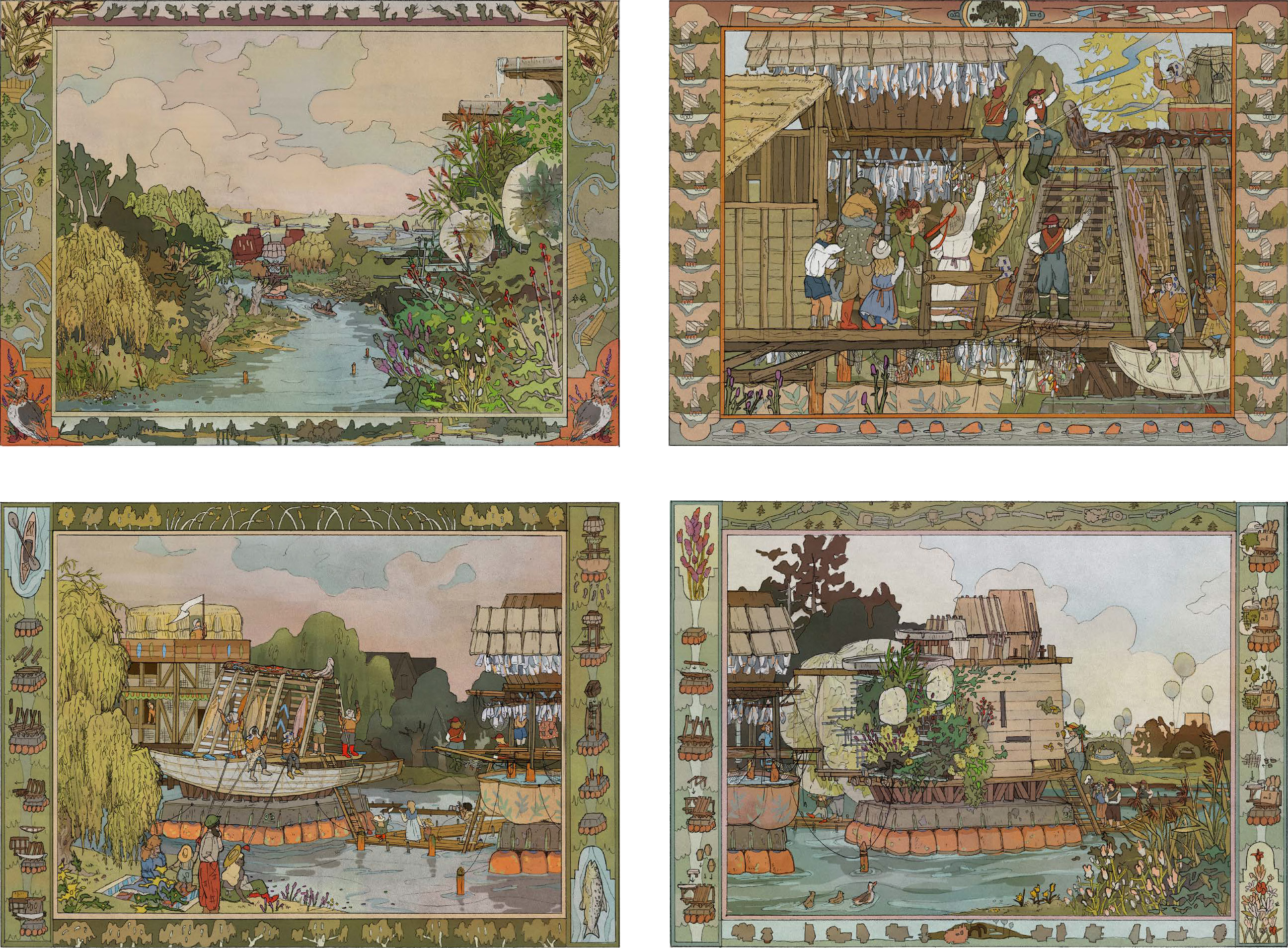A Working Archive of Design, Research and Thoughts
The River, Restoration and its Rituals
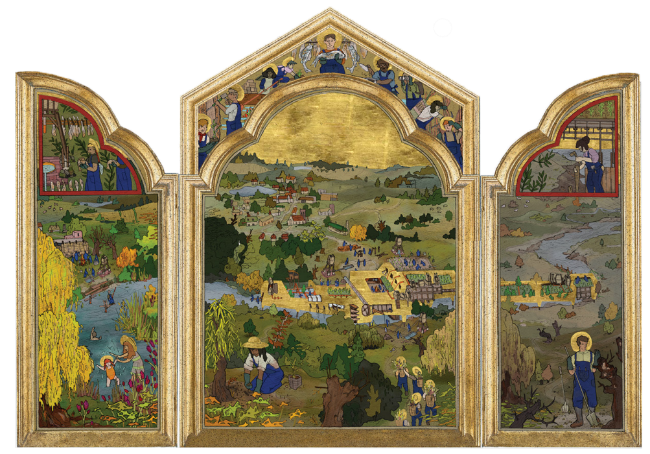
The river rover is simultaneously a restorative and ritual machine, marrying ecological values with the process of restoration. It floats down the river, settles, assembles and then disassembles when restoration is complete to move onto the next portion of the river, augmenting the landscape as it travels.

01
River as Trans-Rurban Commons
The river rover houses productive systems that feed back into the ecosystem as the community uses the building. Structural and operational systems are designed to be self-sufficient, relying on local resources and community labour for construction and maintenance. This in turn empowers the community with resilient skills for living off the river, jumpstarting whole local economies.
Investigating River Wensum
The River Wensum is investigated as a rich bed of material resource and vernacular building knowledge. Due to its vulnerability as a chalk stream, careful attention was paid to the practical needs of river restoration.


Initiation of the Community
From its structural logic to the building envelope, the river rover is designed to be assembled, transported and maintained by the community, with no need for heavy machinery or specialised skills. The skills that are necessary, like thatching, are taught by craftsmen who are housed within the building. It acts as a community centre of sorts, upskilling people with knowledge that taps on the local resources already abundant.
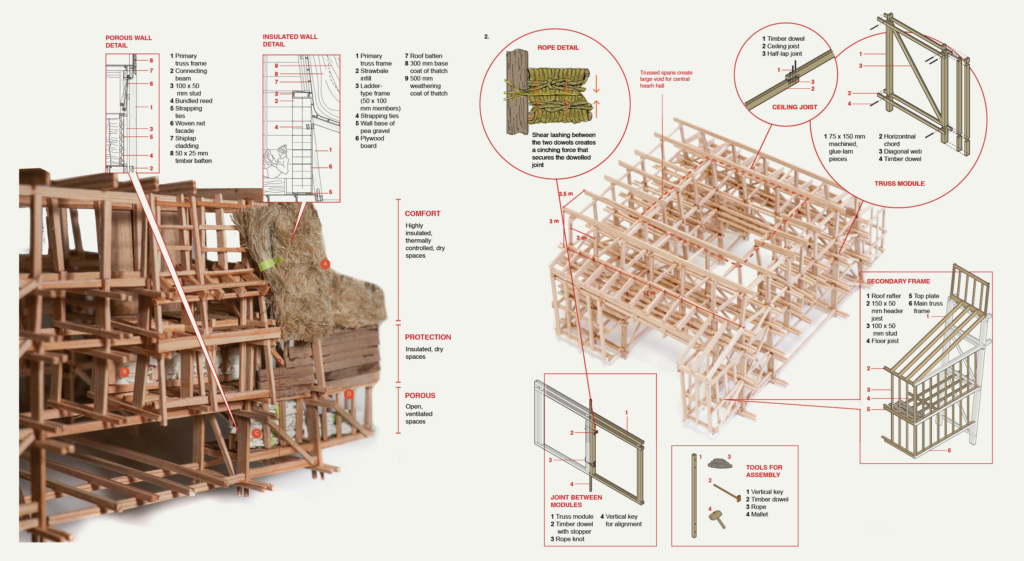

Building Ecosystems
Challenging the dependence on heavy infrastructure which is the primary cause of overexploitation of the river, the building unplugs from the national grid and adopts a decentralised, micro-renewable approach to its operations. Adopting low-tech and user-operated means of resource harvesting also forces inhabitants to act prudently, minimising strain on the river ecosystem.
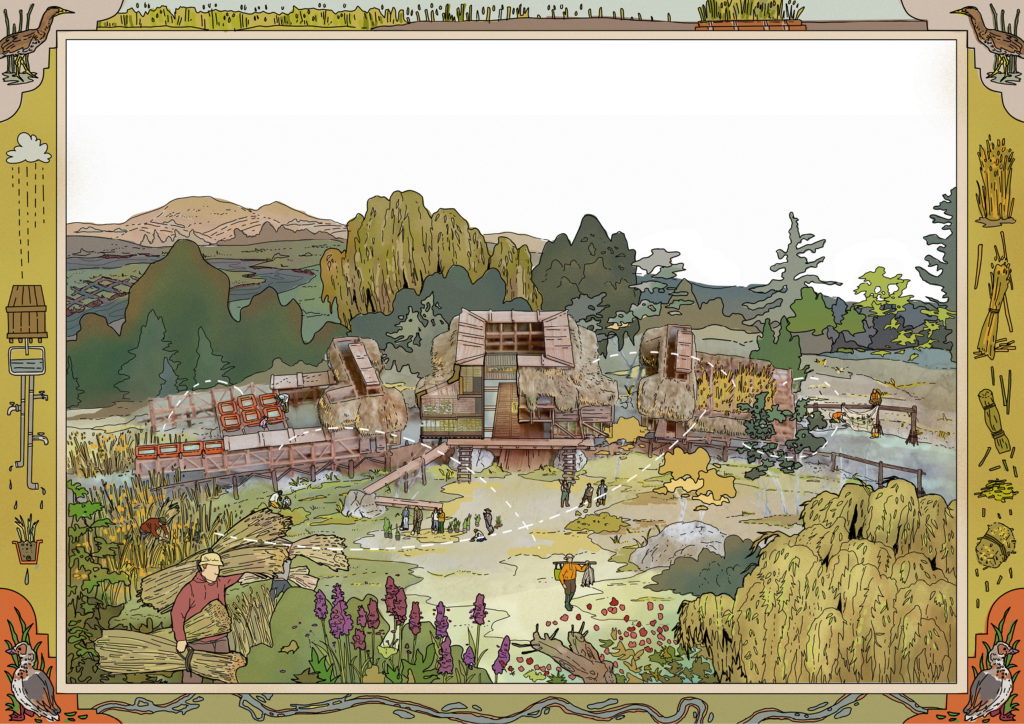
02
Crafting Ecological Rituals
A critical function of the river rover is that of a ritual space for the community to reforge a productive yet spiritual relationship with the riverine landscape. Spatial and material tactics of religious and pseudo-religious spaces are often overlooked for their capacity to choreograph human behaviour and mold mindsets.
Reimagined Rural Futures
To stretch the design potential of the rural leverage scheme, the project speculates on the future of three villages along the River Wensum after being visited by the river rover. The use of myths and rituals over the course of an elongated timeframe adds a new understanding of how the architecture is conceived. Buildings crumble and become remnants, memories become myths.
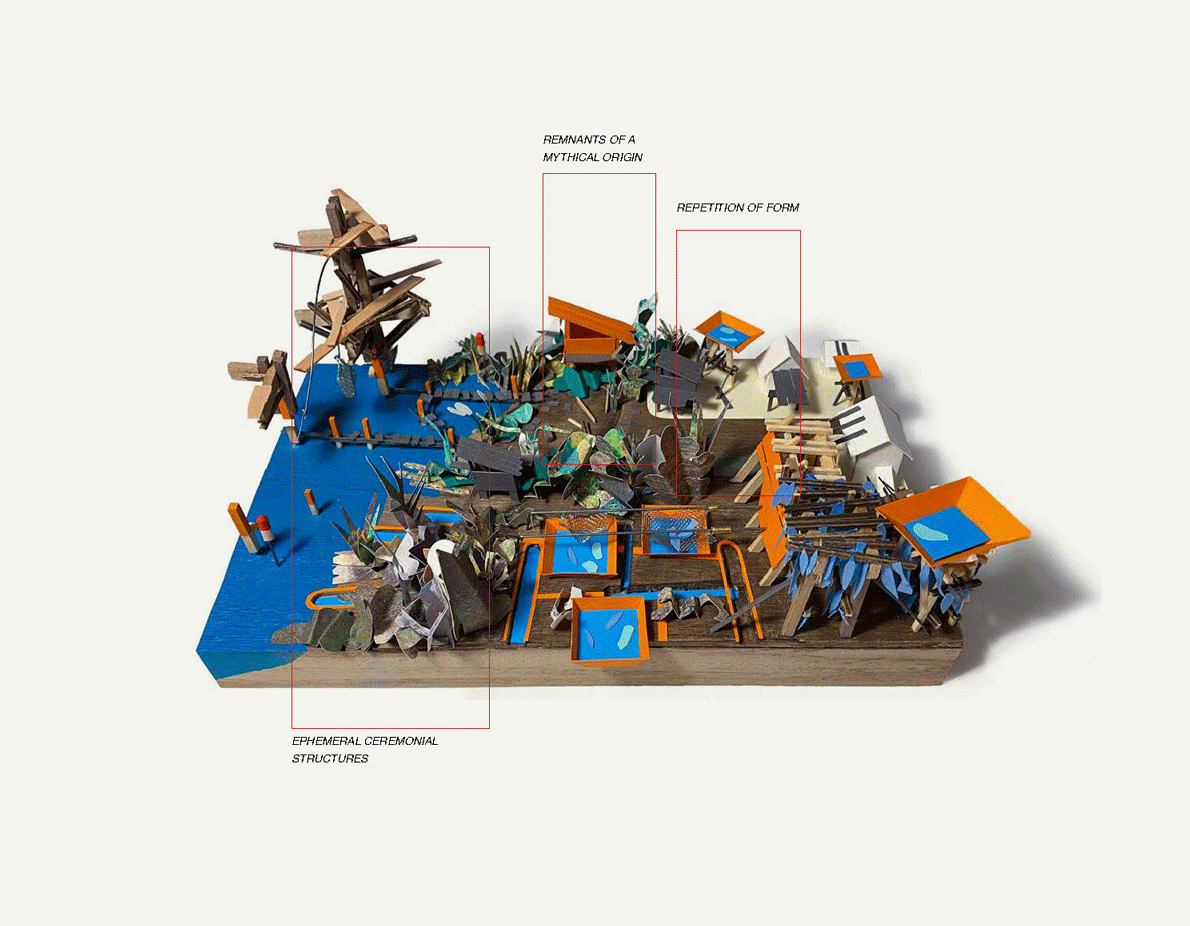


An Ecosystem of Landscape-Dwelling-Object
The landscape is composed of materials
which flow from states of raw to objects
to architecture, as much as it is a field of
community and rituals. The social and material reinforce each other and continue to advance in tandem, as new socio-ecological practices are formed by agents navigating the environment.
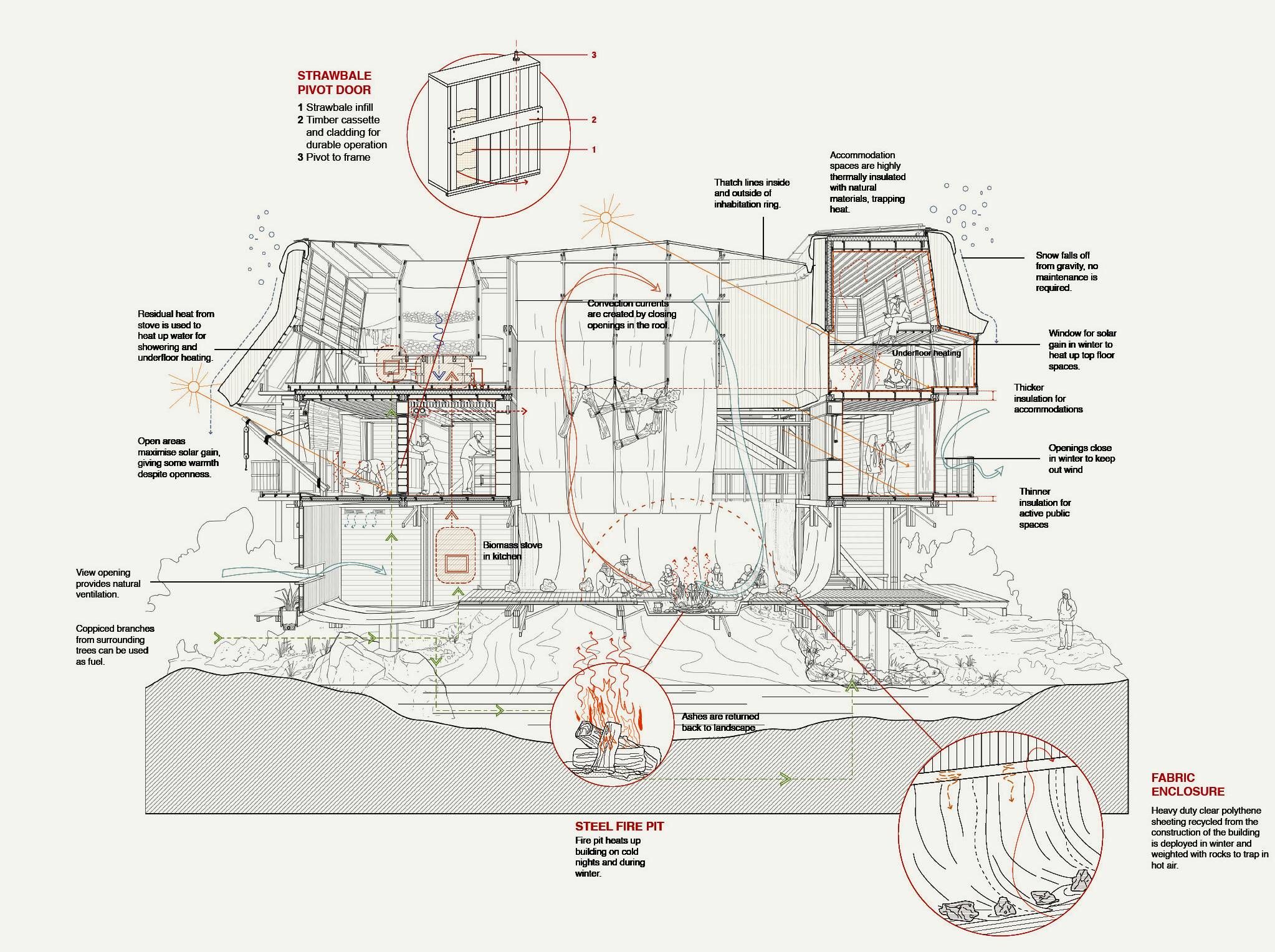
A Ritualised Space
The central hall in the river rover is envisioned as a pseudo-religious space – an altar to the river. It is a site of cultural production, in the sense that it actively sets the stage for community crafts using local materials, and that the proud use of local materials within the building acts as a powerful signifier of the value within these materials, relying solely on thatch and woven reed for ornamentation and inhabitation.
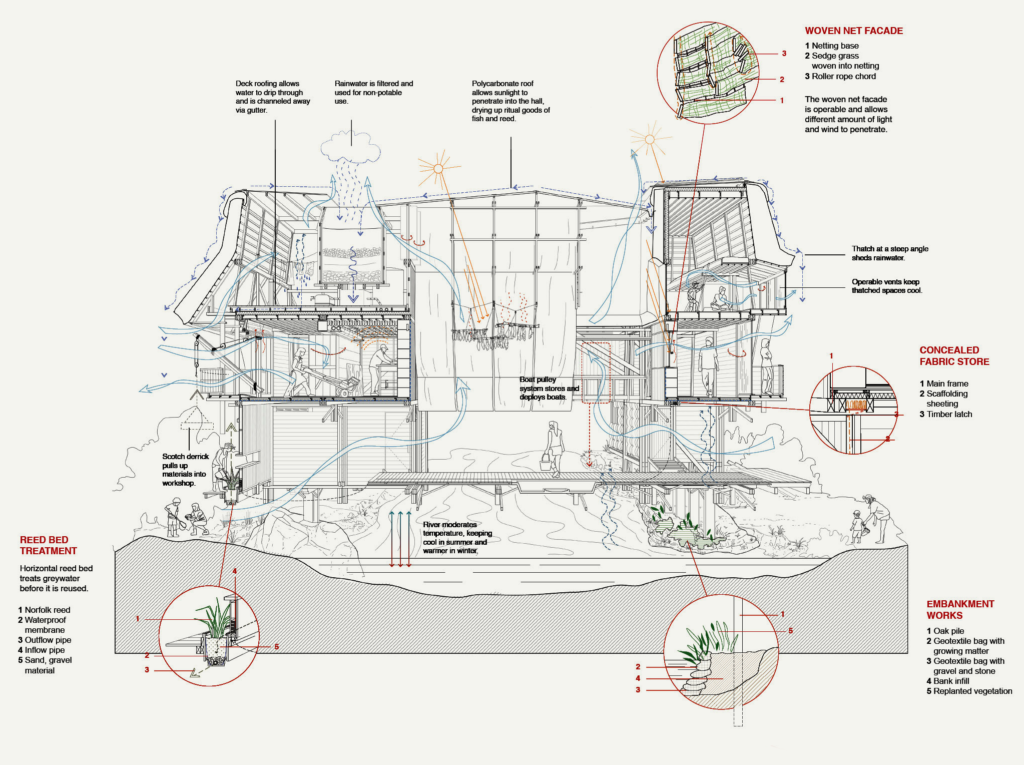
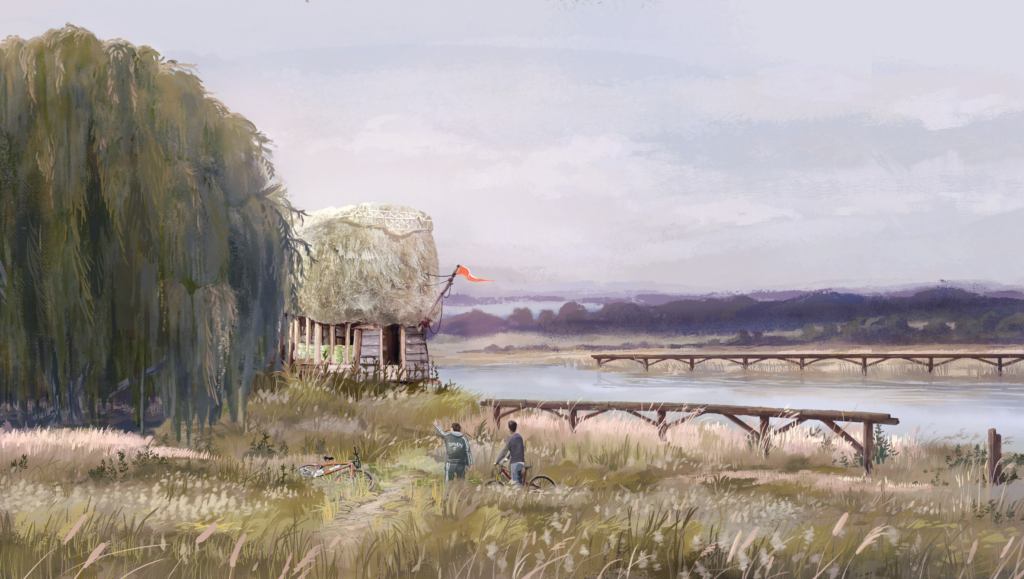
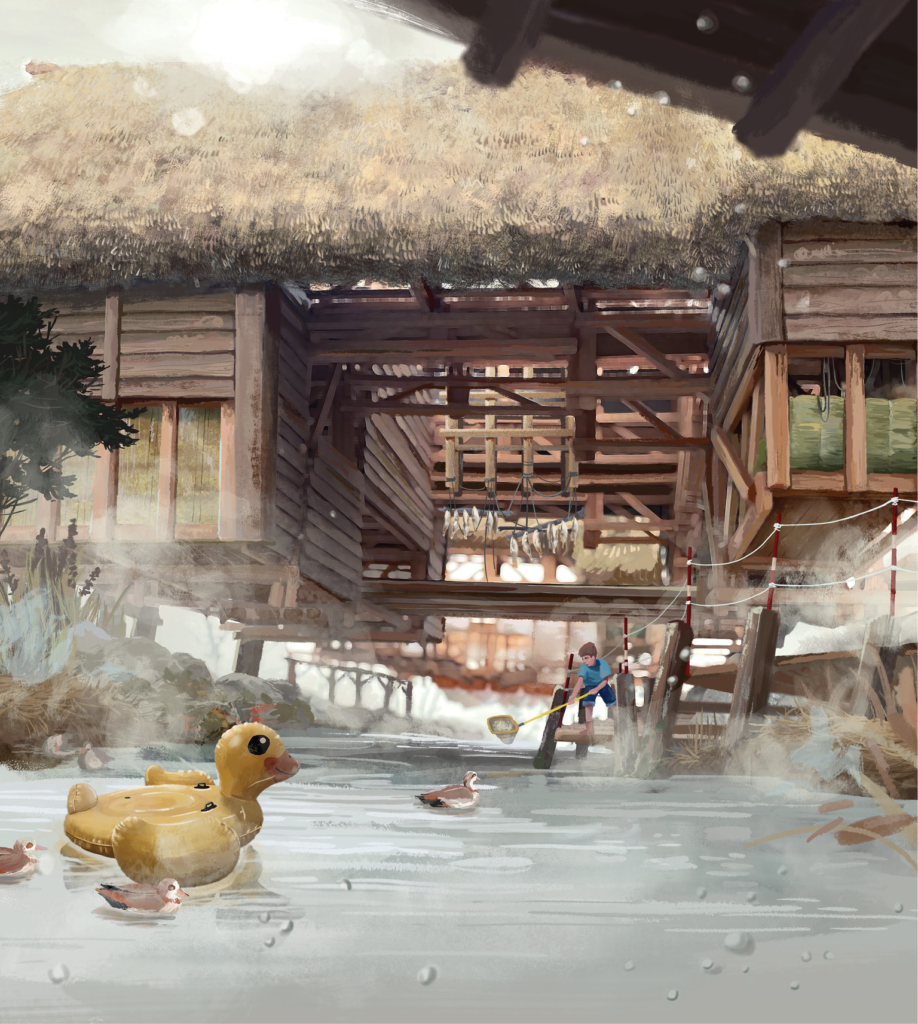

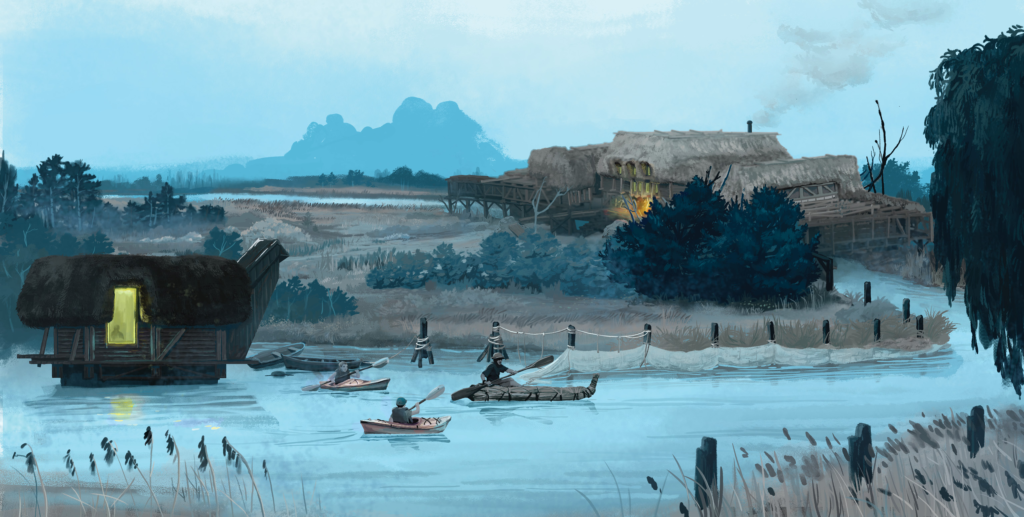
Ritual Practices in Daily Life
Before practices become ritualised into habit, they have to negotiate around existing ways of life and mindsets. Just as how there is a sense of discovery when chancing upon a strangely familiar yet uncanny object, there is an element of friction when architecture tries to act as an agent of change, choreographing people to behave and perceive comfortable landscapes in unexpected ways.
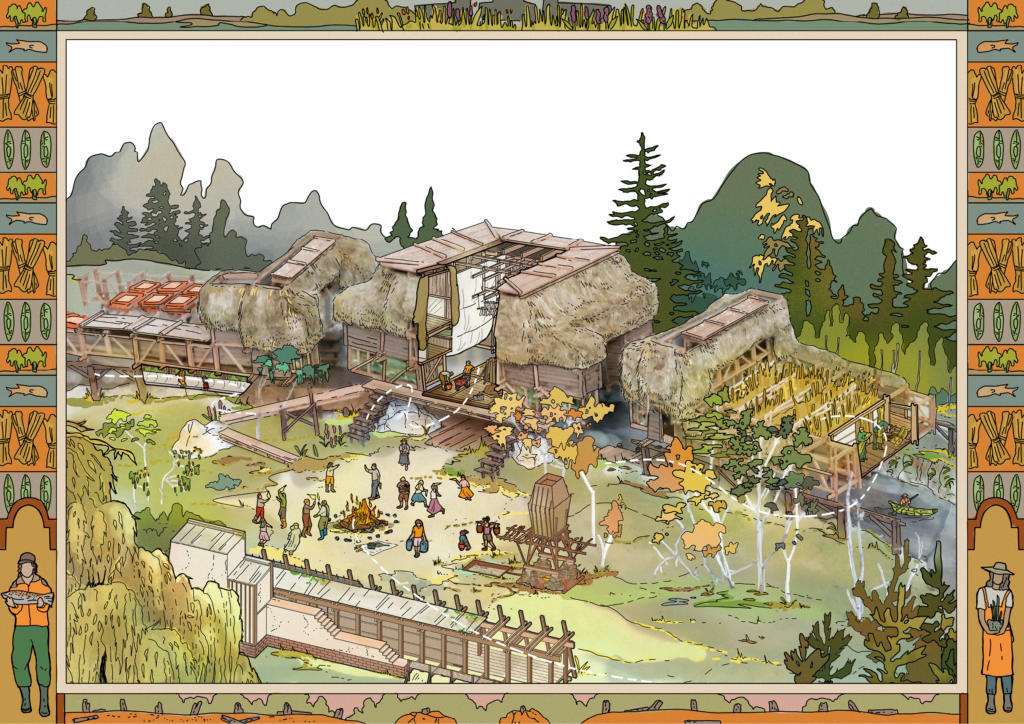
03
Myths, Fables and Artefacts
Not all architecture is made to last forever; the river rover eventually leaves the village once restoration efforts are underway. Architectural elements of the building become artefacts, alluding to the myth of the river rover. These remain as symbols of the community’s revived relationship with the river, imbibing future generations with the same mystical reverence.

Collective Construction Ceremony
As the two wings of the river rover sit draped in ceremonial white to shelter ongoing building efforts, the main hall is hauled onto logs and rolled into the river through the collective strength of the community. Designed to be lightweight, the balloon frame is lifted easily to sit gently above the water, without the need for heavy machinery.

Rock-Casting and Myth-Making
Earth dug up from floodplain connection works is transmuted into a ‘sacred’ relic through a ritual of casting. Villagers gather in the hall and cast the earth into ‘rocks’ that get floated down the river, installed as future foundations for the river rover to rest upon.

Ritual Cycles of Reed
The natural growing cycles of reed creates rituals timed to the seasons, attuning villagers intimately to their surrounding environment. Practices transform reed from one state to another – from ritual object, resource, landscape, to building component, embedding a cyclical mindset of ecology into the community.

Farewell Ceremony
To mark the departure of the river rover, the villagers head down to the river to catch fleeting glimpses of the mystical building born from their collective efforts. The river rover floats upstream, leaving behind a string of empowered villages that form the River Wensum Commons.

